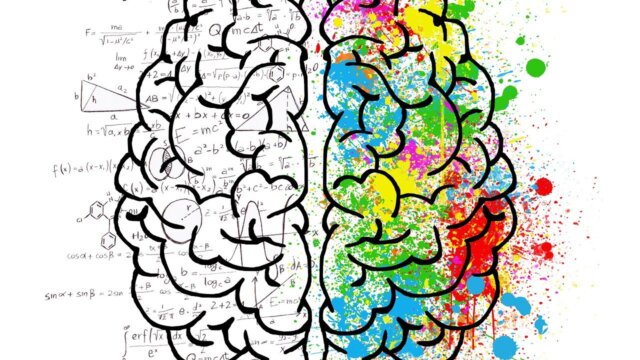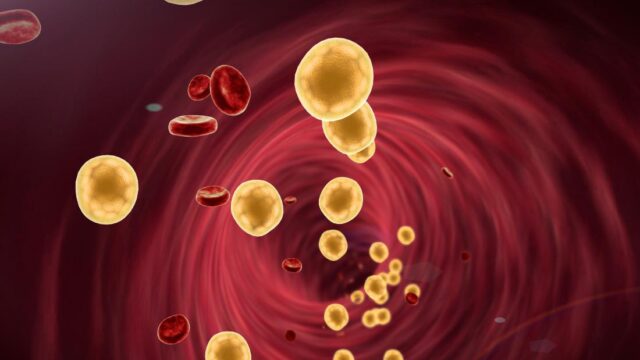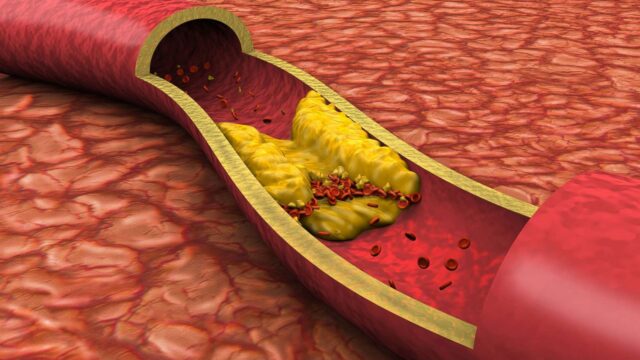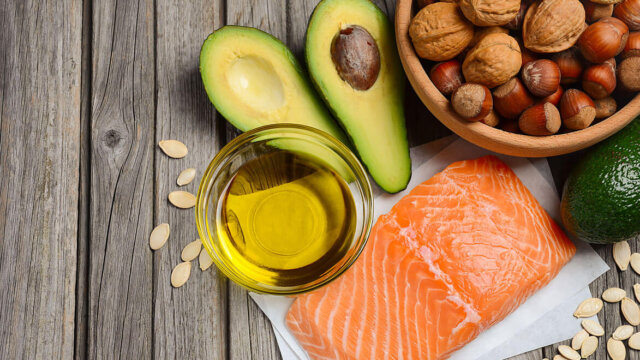FTC disclaimer: This post may contains affiliate links and we will be compensated if you click on a link and make a purchase.
Hyperlipidemia is a medical condition that is considered one of the significant risk factors for cardiovascular disease (CVD), which currently accounts for one-third of total death worldwide.
Because most people don’t experience hyperlipidemia symptoms, it leads to a significant risk for heart disease, stroke, and then death.
In this article, we will explain Hyperlipidemia causes and analyze the risk associated with it.
Further, we will look after the natural treatment for Hyperlipidemia and the available medical treatment for hyperlipidemia.
What is Hyperlipidemia?
Two essential fats (lipids), triglycerides and cholesterol, are produced by the liver and circulate in the blood as one of the fat components of larger molecules called lipoproteins. When levels of these lipoproteins are high, the condition is called hyperlipidemia.
We will discuss the link between hyperlipidemia and the risk of developing heart problems such as coronary disease or the arteries’ blockage.
Moreover, we will also discuss the causes, risks, and treatments for hyperlipidemia, specifically high blood triglycerides.
Importance of Hyperlipidemia (cholesterol and triglycerides)
Over the past two decades, coronary heart disease (CHD) is one of the most common and has become one of the significant causes of death in the United States.
According to the report, it is estimated 7.3 million death in 2001 due to CHD worldwide, and three-fourth of the global end occurs in low and middle-income countries due to CHD.
Furthermore, smoking, obesity, diabetes, high blood pressure, high cholesterol, and high triglycerides have been linked directly to heart problems.
Increased attention to diet and control over cholesterol levels reduces heart problems, stroke, and blood vessels’ diseases.
An evaluation of levels of both cholesterol and triglycerides can be used to help assess a person’s general health.
Specifically, these levels may help indicate the arteries’ condition, including those that supply blood to the heart itself.
Difference between cholesterol and triglycerides
What is Cholesterol?
Cholesterol has a role in hormone and bile production and is a building material for body cells.
Your health can be adversely affected when too much cholesterol in the form of low-density lipoprotein (LDL) is present in your blood.
LDL is one of the two main cholesterol carriers and seems to play a role in the deposition of fat in arteries. These deposits result in blockages called plaque.
In addition to narrowing the arteries, which increases blood pressure, plaque contributes to the hardening of artery walls, a condition known as atherosclerosis.
A second cholesterol carrier, high-density lipoprotein (HDL), acts more favorably in the bloodstream by attaching itself to the plaque deposits and removing them, thereby clarifying the arterial pathways.
Elevated HDL levels are very desirable because they help clear blockages in the arteries, reduce LDL, and decrease blood pressure.
What are Triglycerides?
Triglycerides are important for people suffering from problems such as coronary heart disease.
Triglycerides are lipids normally found in increased blood levels following the digestion of fats in the intestine.
The major transporter of triglycerides is a forerunner of LDL, a simpler molecule known as VLDL (very low-density lipoprotein).
High triglycerides are sometimes linked to high cholesterol levels and, therefore, heart problems.
The exact role that triglycerides play as an independent risk factor in heart disease is not yet clear. Still, tests to measure triglycerides are included when determining a patient’s risk profile.
Signs and Symptoms of Hyperlipidemia
Usually, you won’t experience any Hyperlipidemia symptoms, and also, the body doesn’t show any signs.
However, in inherited or familial hyperlipidemia, the person may develop a sign of a yellow ring around the eyes and fats growth in joints.
The doctor will do a normal routine blood test to understand and detect hyperlipidemia in patients.
However, another way the doctor detect hyperlipidemia is through unusual events like a heart attack or stroke.
A routine blood test is necessary for people of age more than 40 to detect early signs of hyperlipidemia.
Moreover, if hyperlipidemia continues for a longer time, then it may buildup more fat over time and can lead to the cause of atherosclerosis.
Atherosclerosis occurs when the plaques develop and get harden on the walls of the arteries and blood vessels.
Further, it narrows the arteries’ opening, leading to unstable blood flows to the heart and increasing heart disease and stroke risk.
Effects and causes of Hyperlipidemia
Elevated triglyceride levels and high cholesterol typically occur due to high-fat meals (mostly processed) and high carbohydrates.
Lowering triglycerides and cholesterol is part of the body’s normal response in a cyclical pattern of high – low – high – low.
Elevated triglycerides and cholesterol are often associated with increased levels of LDL (Low-density lipoprotein).
Also, for some individuals, elevated triglycerides and cholesterol levels may pose a risk factor for heart-related problems.
Hyperlipidemia Classification
Hyperlipidemia is generally classified into two heads: Primary and Secondary Hyperlipidemia.
Primary Hyperlipidemia
Primary hyperlipidemia is also called familial hyperlipidemia due to a genetic defect.
Genetic Causes for Primary Hyperlipidemia
Most of the hyperlipidemia cases are not genetic, but some cases may be due to a genetic disorder that may affect liver functioning.
Individuals diagnosed with hyperlipidemia, particularly high levels of either fats (triglycerides or cholesterol), should encourage genetically related family members to undergo regular testing for liver dysfunction.
Moreover, genetically inherited hyperlipidemia is often called familial combined hyperlipidemia.
Also, familial combined hyperlipidemia often occurs at an early age, mostly starting in the teens. The occurrence of familial combined hyperlipidemia is mostly developed due to high triglycerides or high cholesterol levels.
For most of the individuals who have high levels of triglycerides or cholesterol, it is estimated one out of 500 has a genetic condition.
According to Fredrickson’s classification, primary hyperlipidemia is further divided into different types of hyperlipidemia.
Hyperlipidemia types | Disease name | Occurrence | Increased Lipoprotein | Increased lipid fraction |
|---|---|---|---|---|
Type I | Hyperchylomicronemia | Very rare | Chylomicrons | Triglycerides |
Type IIa | Less common | LDL | Cholesterol | |
Type IIb | Familial combined hypercholesterolemia | Commonest | LDL and VLDL | Cholesterol and triglycerides |
Type III | Dysbetalipoprotenemia | Rare | IDL, Chylomicron remnants | Triglycerides and Cholesterol |
Type IV | Familial hypertriglyceridemia | Common | VLDL | Triglycerides |
Type V | Familial lipoprotein lipase deficiency | Less Common | VLDL and Chylomicrons | Triglycerides and cholesterol |
Secondary Hyperlipidemia
Acquired Causes for Secondary Hyperlipidemia
Most of the causes of hyperlipidemia (elevated triglycerides and cholesterol level) are generally acquired due to the following reasons:
- A high-fat diet or carbohydrates (sugar) containing foods
- Consumption of Excessive alcohol, which can be habitual
- Exogenous estrogens
- Poorly controlled and managed diabetes.
- The use of beta-blocker drugs or corticosteroids.
Women, particularly diabetics patients, are at great risk of hyperlipidemia.
A recent research report has indicated that consuming a high carbohydrate diet, which generally raises blood sugar and insulin levels, will contribute to greater production and fat storage.
As a result, it will have high triglycerides and cholesterol, leading to high LDL levels.
Further, it will lower the HDL levels or decrease the HDL/LDL ratio (‘good’ to ‘bad’ cholesterol) below normal.
Effects of Hyperlipidemia
Research indicated that there is a possible correlation between elevated triglycerides and high blood pressure.
So, when the excess amounts of this fat (triglycerides or cholesterol) increase, VLDL concentration may contribute to plaque deposits, increase blood pressure, and heart problems.
Lowering triglycerides and cholesterol level is the foremost step you can take to reduce the risk of heart attack (coronary thrombosis) and atherosclerosis.
Moreover, if prolonged, the research indicated that hyperlipidemia might also result in pancreatitis.
Pancreatitis is a medical condition in which your pancreas will get inflamed, affects malabsorption of nutrients, and could lead to diabetes.
If triglycerides level is too high, it may also lead to pancreatitis, called hypertriglyceridemia-induced pancreatitis.
As pancreatitis progresses and gets severe, its damage may spread to other organs, including the heart, lungs, and kidneys.
Clearly, in addition to treating high cholesterol, lowering triglycerides is essential.
Measuring Triglycerides and Cholesterol levels (Blood Fat)
As we have discussed, Hyperlipidemia is a term used when we have high blood cholesterol and/or elevated blood triglycerides.
We now know that elevated triglycerides promote the deposition of cholesterol in the arteries, which results in a thickening and hardening of the artery walls, a condition known as atherosclerosis.
Reducing triglycerides in the bloodstream is a good strategy to help minimize heart problems.
Research Findings
According to the American Heart Association, one study by Koren-Morag, Graff, and Goldbourt found that individuals with elevated triglycerides have a nearly 30% increased probability of suffering a stroke, even after taking into account other risk factors such as cholesterol levels.
One of the most important aspects of this study is that it clarifies the independent link of lipids to stroke, meaning that a causal relationship is likely. So, adjusting your intake of fat is very important.
Measurement of Blood Triglycerides level
According to the Guidelines, which is published in both the American Heart Association and the National Cholesterol Education Program has specified below measures:
Triglyceride Level | Blood Concentration (mg/dL) |
|---|---|
Ideal | < 100 |
Normal | 100 to 150 |
Borderline High | 150 to 200 |
High | 200 to 500 |
Very High | 500 to 1000 |
Extreme | > 1000 |
Because blood triglycerides increase after a meal—particularly one high in fat, sugars, or alcohol—patients are required to fast twelve to fourteen hours before having blood drawn.
The same is not typically true for cholesterol testing, but doctors recommend a fast for people on certain medications or those with borderline high cholesterol.
Concentrations of blood fats are determined by measuring their carriers’ levels—HDL, LDL, and VLDL—and ratios of carriers to one another.
LDL has the capacity to transport more cholesterol than HDL and to deposit more in the arteries. Therefore, the greater the HDL/LDL ratio, the lower the potential for depositing cholesterol.
Similarly, the larger the ratio of HDL to total cholesterol, the better. Minimizing blood VLDL levels is one way of reducing triglycerides.
Blood Lipoprotein Level | Relative Blood Concentration and Type of Fat | Risk of Heart and Cardiovascular Problems |
|---|---|---|
High HDL | Low cholesterol | Reduced |
High LDL | High cholesterol | Increased |
High VLDL | High triglycerides | Increased |
Optimal Measurements
- HDL> 60 mg/dL (normal 35 to 60 mg/dL)
- LDL < 100 mg/dL
- Total cholesterol < 200 mg/dL
- Triglyceride < 150 mg/dL
Elevated triglycerides often accompany low levels of circulating HDL.
HDL values below 35 mg/dL are considered a separate risk factor for heart disease. Increasing levels of HDL is key to reducing triglycerides and LDL.
Hyperlipidemia Natural Treatment

Reduce Blood Triglycerides
When triglyceride levels are consistently high, lowering their levels is key to lessening the probability of a heart attack or stroke.
Normally, only when levels exceed 200 mg/dL would you actively undertake lower triglycerides, but the optimal blood triglyceride level is under 150 mg/dL.
Reduce the intake of processed foods/refined carbohydrates
A first step in lowering triglycerides is to plan a diet low in saturated fat, with a minimum of processed/refined carbohydrates. (This means cutting back on those greasy burgers and fries!)
For some, it may be necessary to increase the protein component of their diet.
Naturally occurring carbohydrates rich in vitamin B are important to a balanced diet geared towards lowering blood cholesterol and triglyceride levels.
Regular exercise to reduce hyperlipidemia
If you are at risk, design an aerobic exercise program of three 30-minute segments a week, for example.
Regular exercise will help increase levels of good cholesterol (HDL) in the blood.
If you are overweight, set a body weight target. Reduce alcohol consumption if excessive. If applicable, cease smoking.
If you have type 1 diabetes, maintain stringent control over high blood sugar levels.
Reduce amino acid homocysteine
High blood levels of homocysteine (common amino acid) are suspected of promoting atherosclerosis. Increasing the intake of folic acid and vitamin B6 and B12 can help reduce homocysteine levels.
Increase the intake of vitamin B
Natural sources of vitamin B are beneficial—whole grains, leafy greens, vegetables, molasses, brewer’s yeast, and nuts of all types.
Moreover, meats and liver are also good sources of vitamin B. Still, they can also be high in fat and cholesterol, which should be taken in limitation or after doctor consultation.
Take Omega-3 fatty acids supplement.
Other naturally occurring substances, such as Omega-3 fatty acids (components of fat/oil molecules), may reduce high levels of triglycerides and increase HDL levels.
It makes sense to seek the help of a trained nutritionist or dietitian regarding your diet plan.
Hyperlipidemia Treatment with Medications
Medications are rarely prescribed for triglyceride levels that are less than 400 mg/dL.
But when medications are indicated, statins, such as Zocor®, Lipitor® or the new statin Crestor®, or the drug Lopid® may be prescribed.
Some doctors may also recommend taking niacin (vitamin B3) daily.
Even if drugs are used to treat high triglycerides, lifestyle management is still an important consideration.
For example, this means addressing obesity through regular aerobic exercise while adhering to an improved diet.
Agent or Drug | Impact on Blood Triglycerides | Impact on LDL Level | Impact on LDL particle size (bigger is better!) | Impact on HDL Level |
|---|---|---|---|---|
Lopid | decrease | slight decrease | increase in particle size | increase |
Niacin | decrease | slight decrease | increase in particle size | increase |
Statins | slight decrease | decrease | little or no increase in particle size | slight increase |
Lopid
One of the commonly prescribed non-statin drugs, Lopid, inhibits the formation of blood fats.
Reduction of triglycerides and cholesterol generally occurs within three months of taking the drug. The most common side effect is indigestion.
If any other symptoms occur, such as chest pain, shortness of breath, irregular heartbeat, or nausea, your doctor should be informed immediately.
A double dose of Lopid should not be taken to compensate for a missed dose.
Niacin
Niacin is found to be effective in lowering triglycerides and LDL cholesterol. Besides, niacin benefits also include enhancing the effect of some statins, raising HDL (good cholesterol), and lowering fibrinogen levels.
Fibrinogen levels should be low because it will contribute to plaque formation. Additional benefits of Niacin include slowing the signs of aging.
Moreover, some drugs or supplements may negate the niacin benefits in Hyperlipidemia.
Research has indicated that Niacin is a good replacement for a statin in some cases and has very mild side effects.
Niacin Side Effects
The most common niacin side effects include upset stomach, flushing, and itching after taking niacin.
Some doctors also recommend taking aspirin to counteract the flushing effect. In some cases, liver enzymes may rise to abnormally high levels.
Diabetics patients may suffer higher blood glucose levels, but a slight increase in blood glucose level is generally observed as per research. So, most doctors won’t recommend niacin for insulin-dependent diabetics.
Individuals who had Gout risk, a form of arthritis, should check with their physician before taking niacin supplements.
Statin Drugs: Crestor, Lipitor & Zocor
Statins are drugs used to reduce triglycerides and LDL cholesterol.
Before starting a prescription, be aware of potential side effects.
Statin Drugs Side Effects
While most people experience no discomfort with Zocor, Crestor, or Lipitor, statin drugs’ side effects can include indigestion, constipation, and muscle pain.
Close monitoring is necessary when taken in conjunction with the antibiotic erythromycin or the heart drug digoxin.
When taken with other cholesterol-lowering drugs, statins have an additive effect.
You may wish to discuss side effects and contraindications with your doctor when considering its use or if it’s being prescribed for you.
Outlook
Knowing and understanding available hyperlipidemia treatment options is important.
While some hyperlipidemia treatment options may not apply to your situation or suitable for your circumstances. But being armed with the knowledge will certainly help you discuss your treatment with your doctor.
If hyperlipidemia remains untreated, people will have a greater chance of developing coronary heart disease (CHD).
Additionally, it can also lead to heart attack, stroke, and many other problems.








